Hama – Great Mosque حماة – جامع الكبير
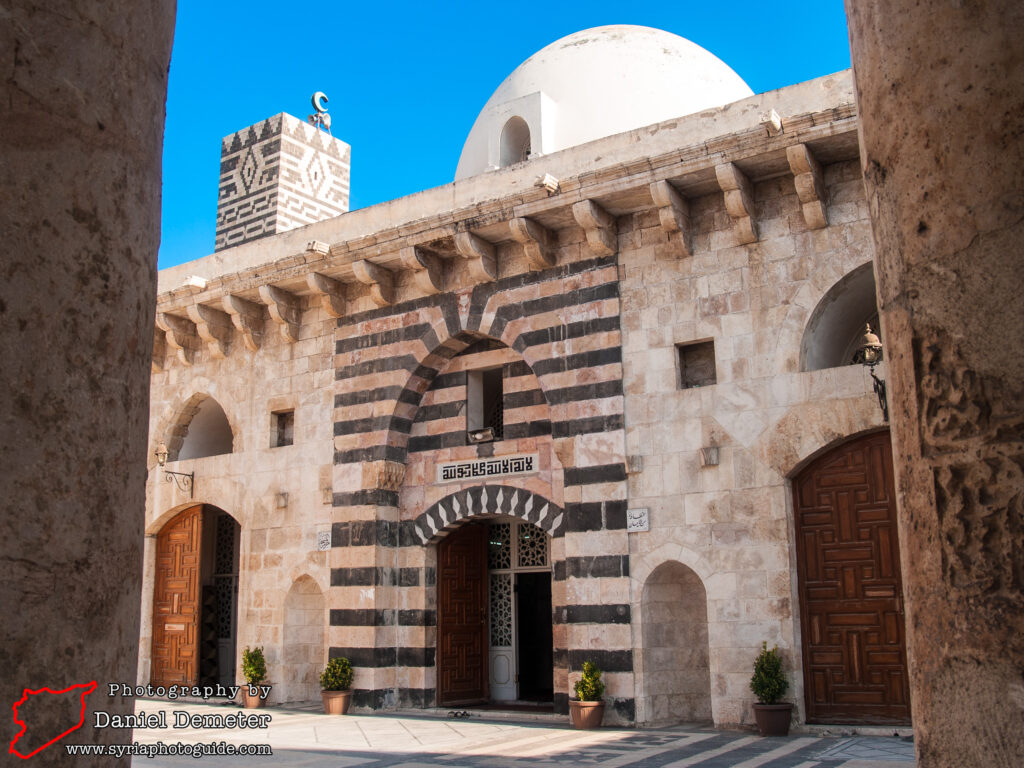
Great Mosque of Hama (جامع حماة الكبير) is the most impressive religious site in the city, despite being almost entirely reconstructed after the 1982 conflict. Dating back to the 7th century, the mosque was converted from a Byzantine church under Abu Aabideh Bin al-Jarah (أبو عبيدة بن الجراح) during the Umayyad period. That 6th century church was converted from an even earlier Roman temple, originally constructed in the 3rd century and dedicated to Jupiter.
The northern entrance leads into a large courtyard, surrounded by vaulted porticos on three sides. The prayer hall is located to the south. There are pieces of Roman and Byzantine masonry utilized throughout the courtyard, the most noticeable being several columns and capitals. The courtyard features an elevated treasury similar to that of the Umayyad Mosque (الجامع الاموي) in Damascus (دمشق). It is assumed to date back to the Umayyad period. To the west of the treasury is a domed chamber housing the tombs of two Ayyubid rulers of the city, al-Mansour II Mohammed (المنصور الثاني محمد) and al-Mazafar III Mahmoud (المظفر الثالث محمود).
The prayer hall itself retains elements of the basilica plan, with three aisles topped by five domes. The interior side of the western wall features a Greek inscription, while the eastern wall includes several reused Roman-era stones, some with carved decoration on the exterior. The mosque has two minarets. The eastern minaret was constructed in the Seljuq period and is dated by inscription to 1153. The square design features geometric patterns in black and white stone. On the northern end of the courtyard is a later minaret, constructed under Ibrahim al-Hashami (إبراهيم الهاشمي) in 1420. It follows an octagonal design typical to the Mamluk period, again reminiscent of the Umayyad Mosque (الجامع الاموي) in Damascus (دمشق) but on a much more modest scale.
The Great Mosque of Hama (جامع حماة الكبير) was almost completely destroyed during the 1982 conflict between the Syrian government and the Muslim Brotherhood. The building was carefully restored in subsequent years, maintaining the original design. The successful restoration of the mosque should provide some optimism for the future of several historic mosques that have been damaged or destroyed in the ongoing conflict in Syria.
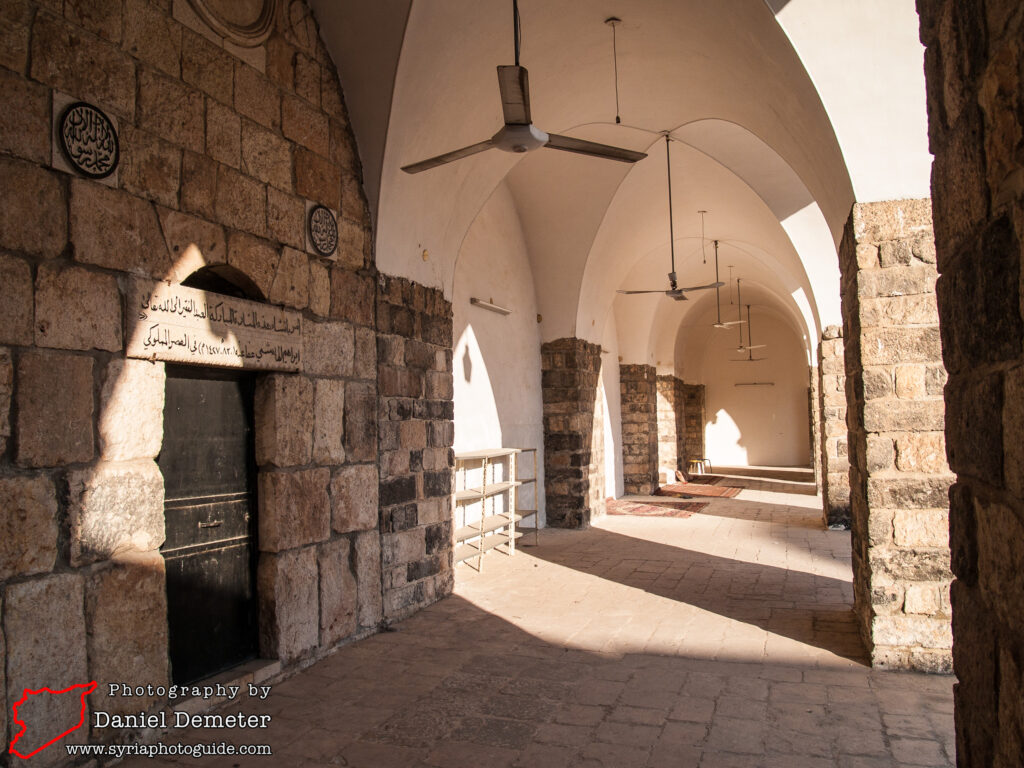
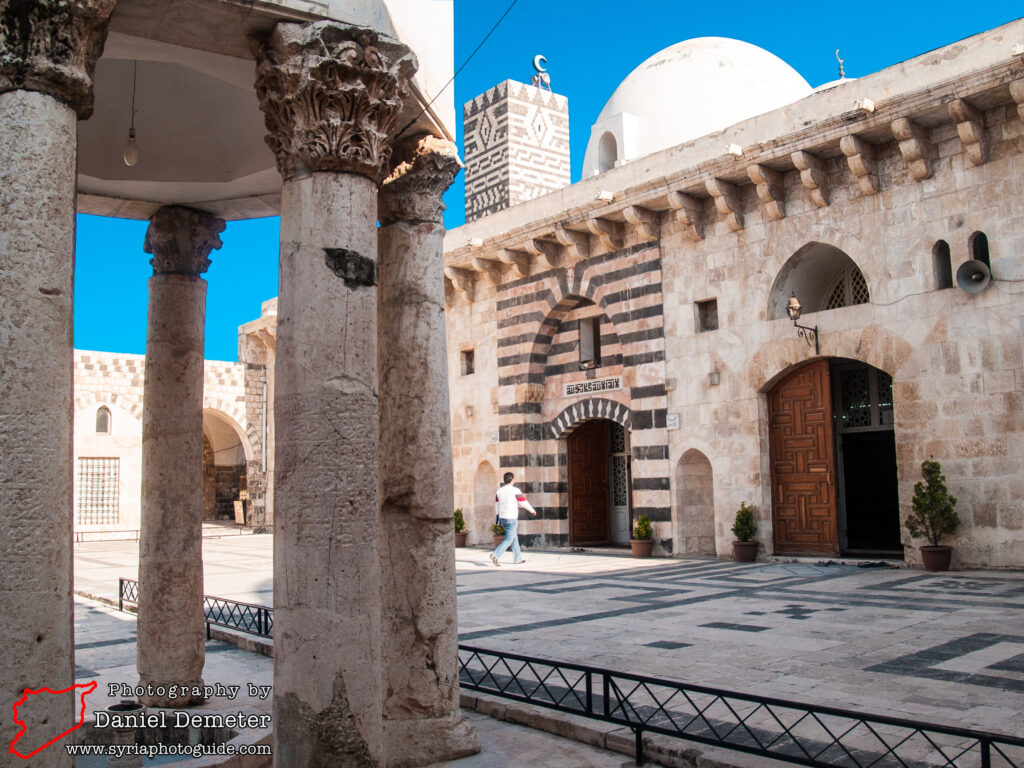
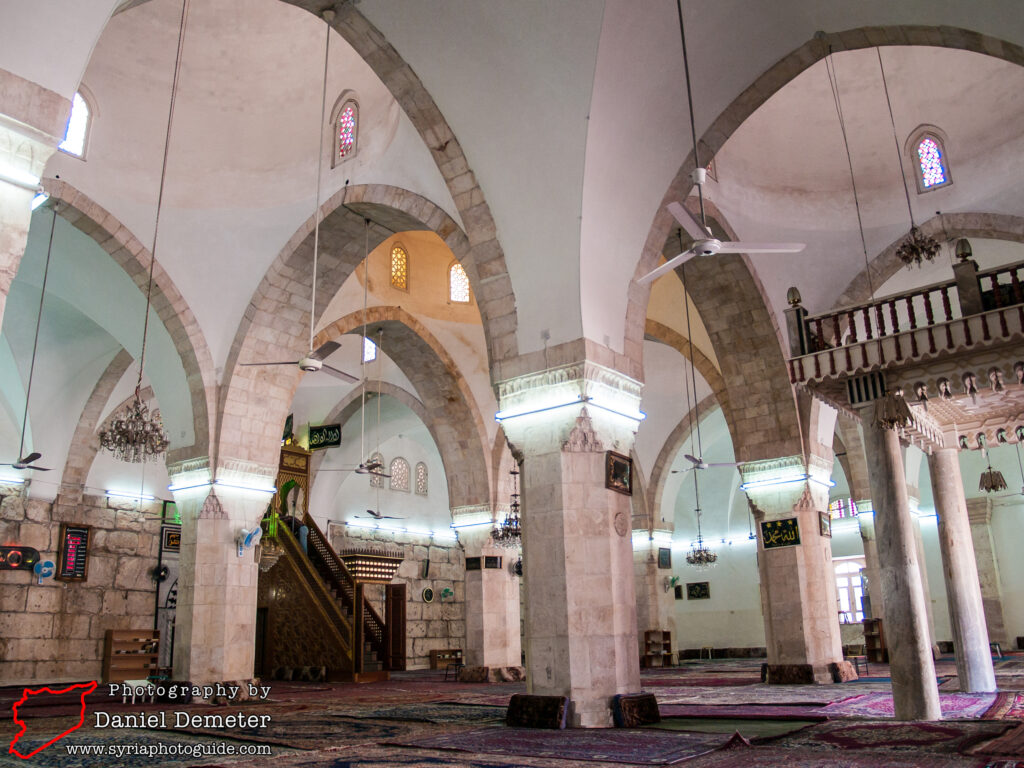
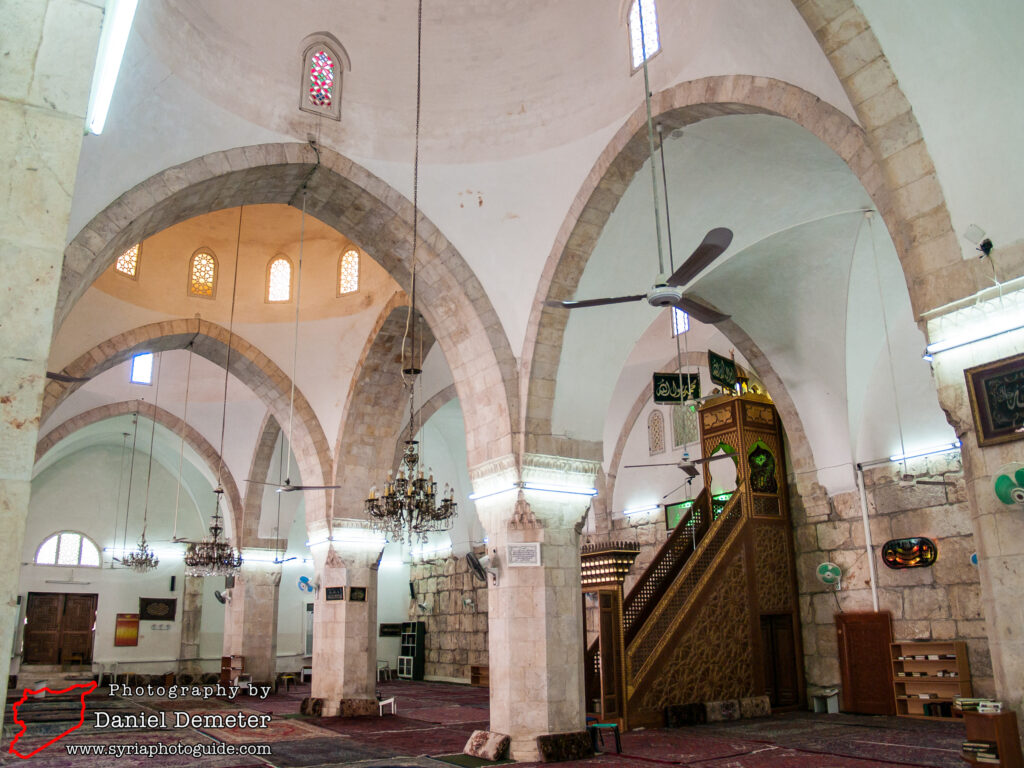
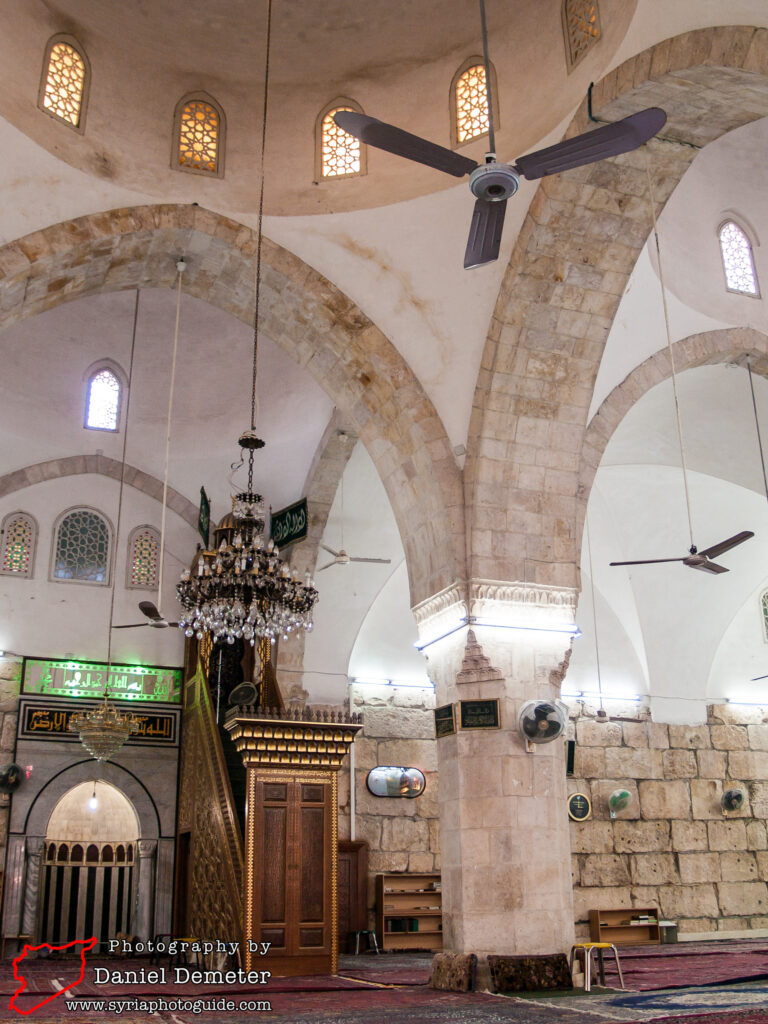
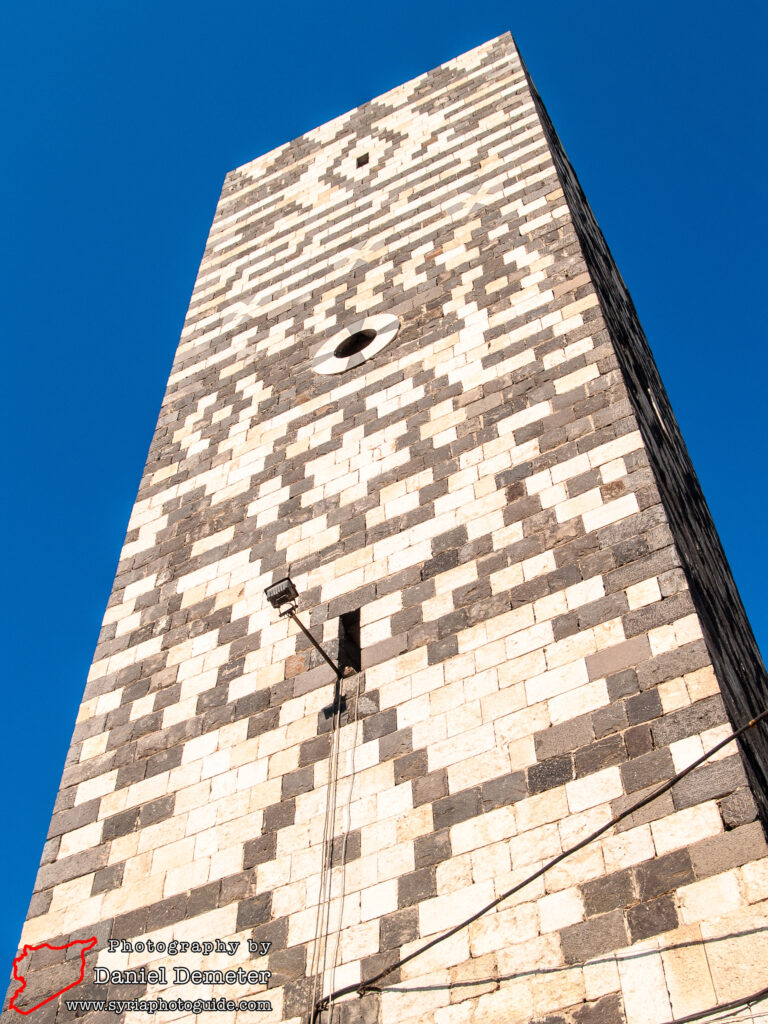
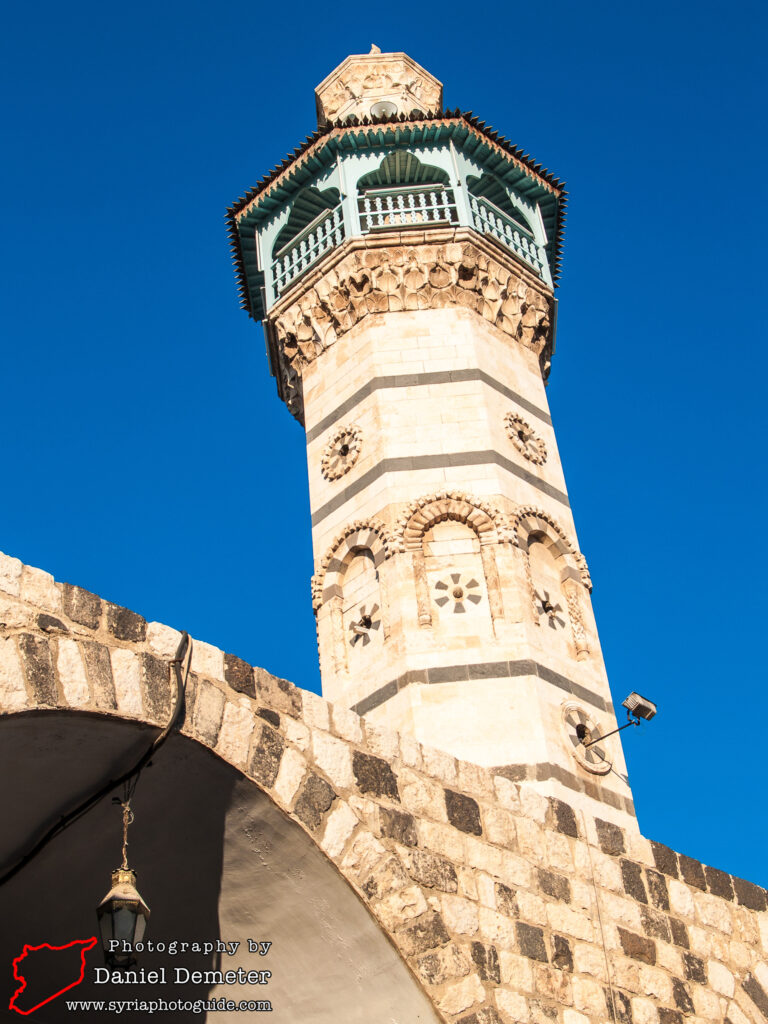
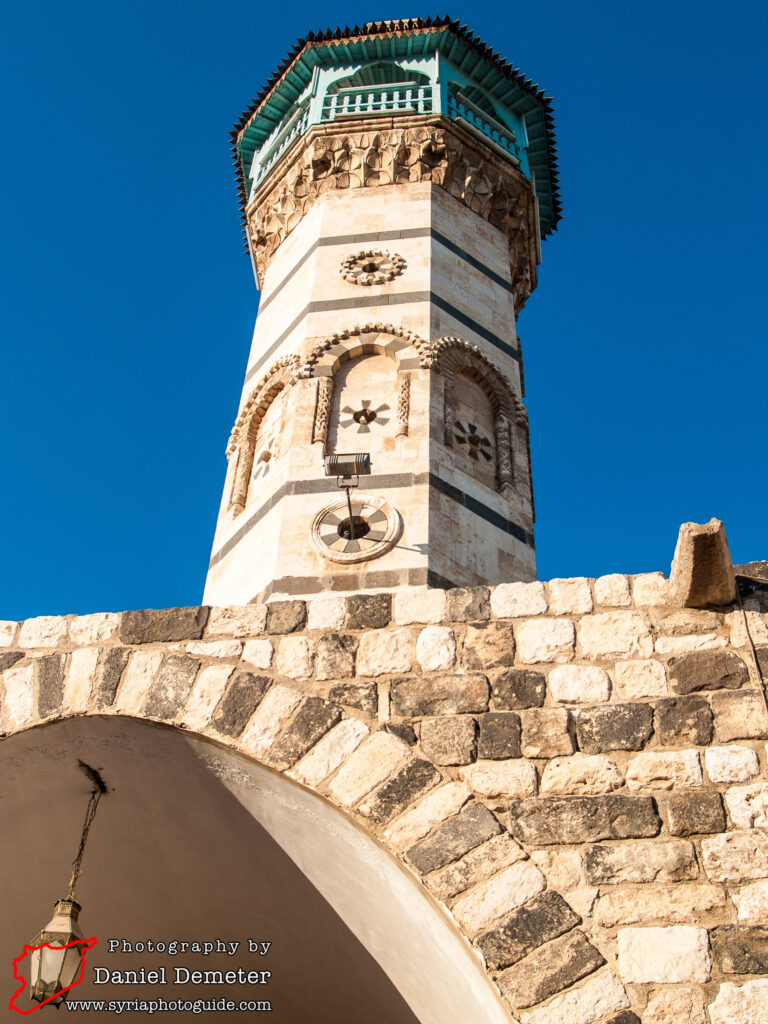
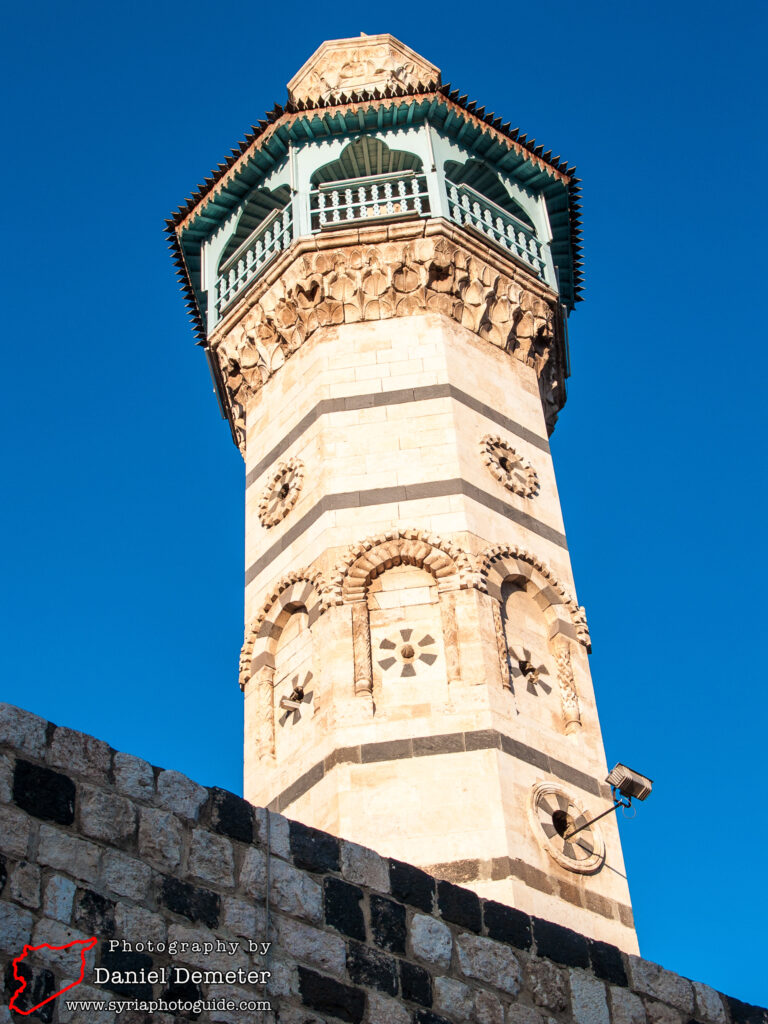
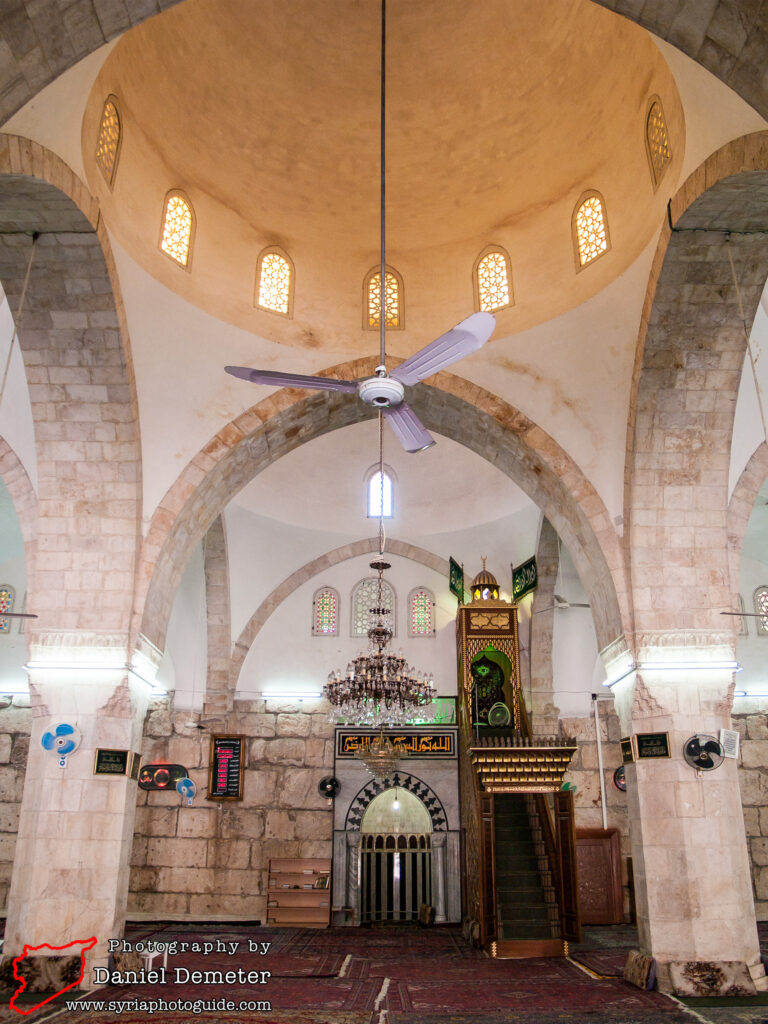
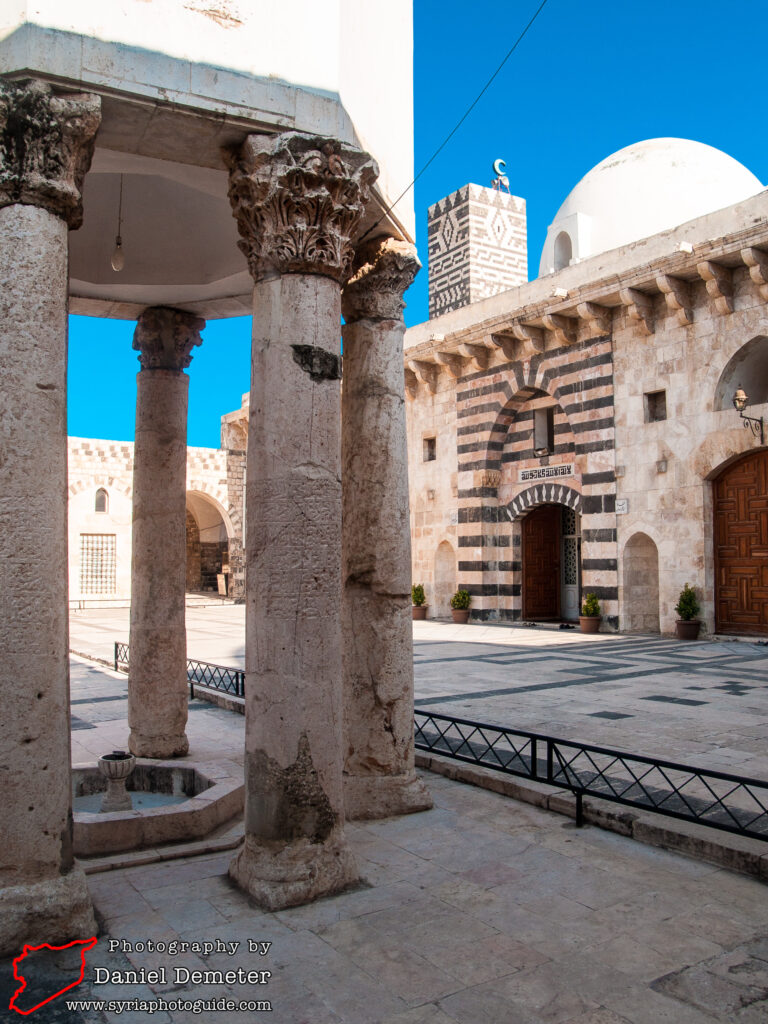
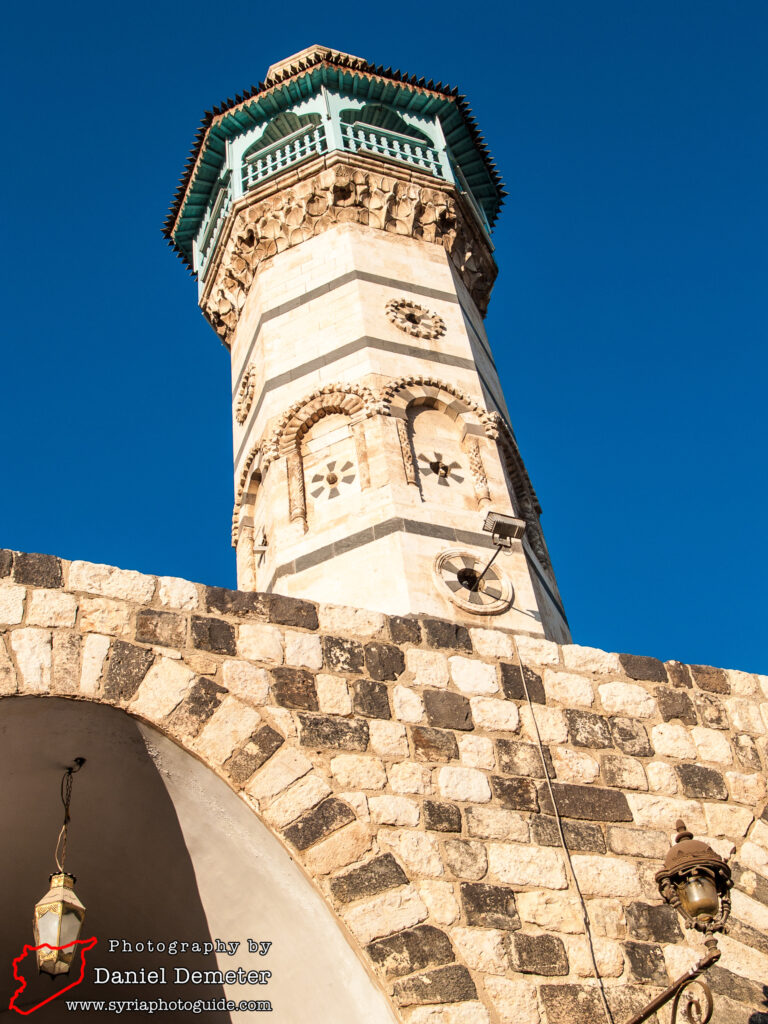
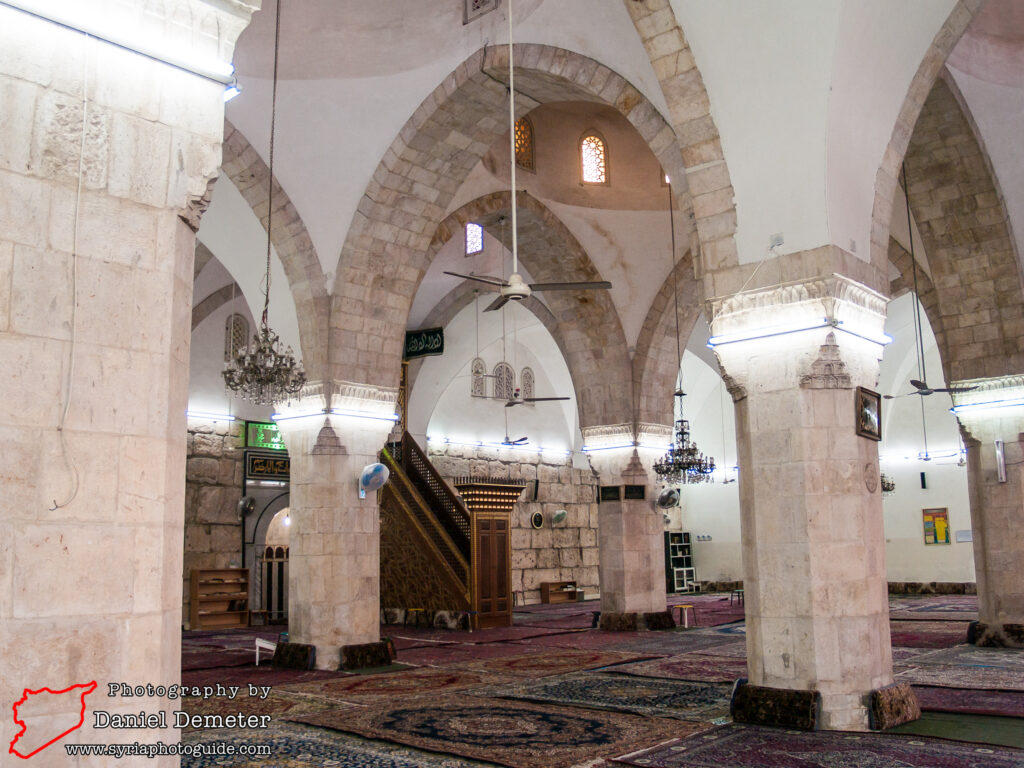
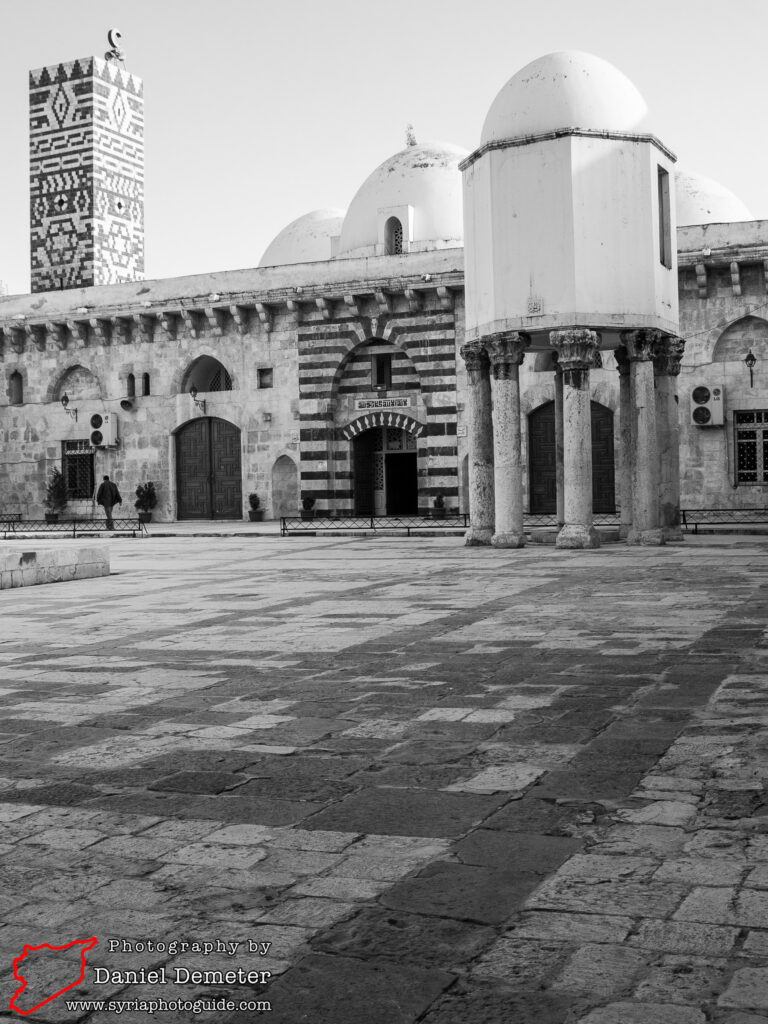
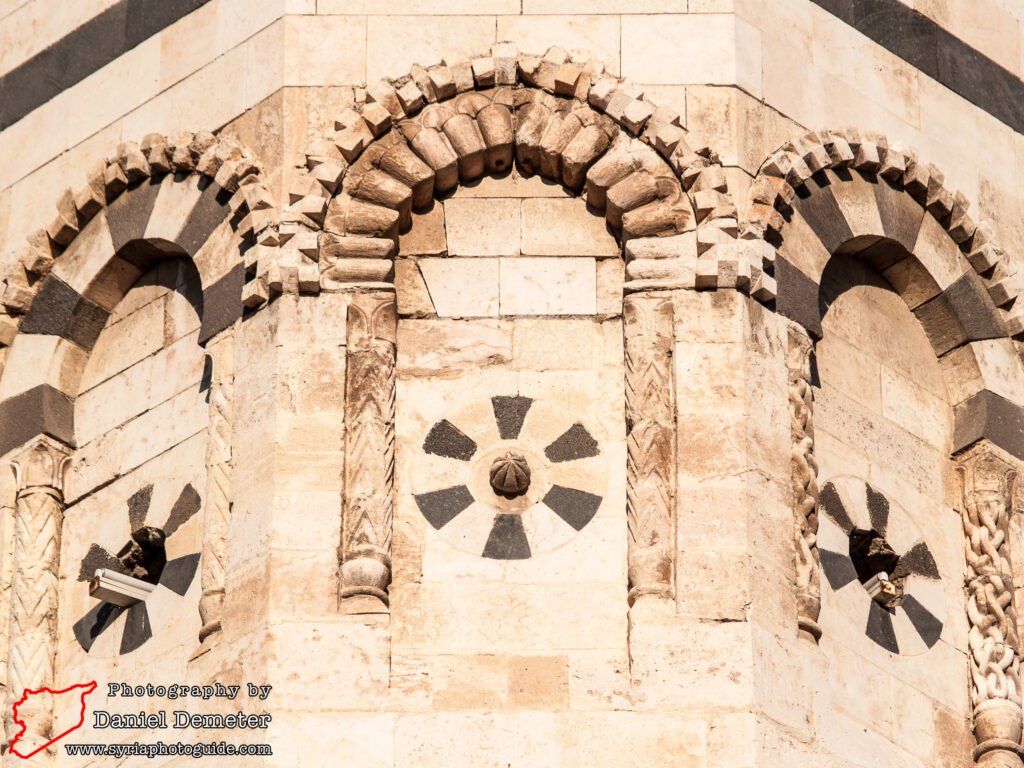
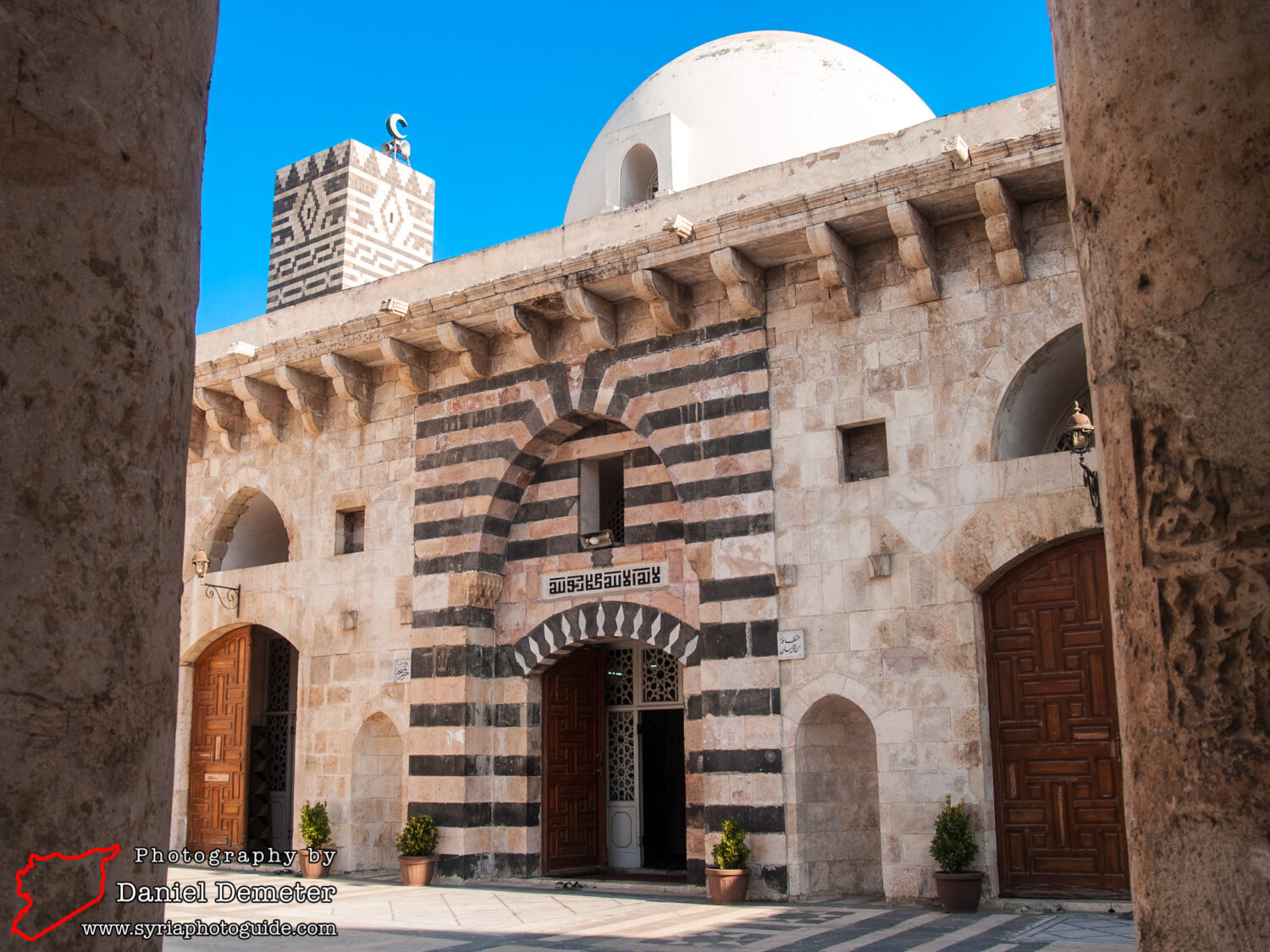
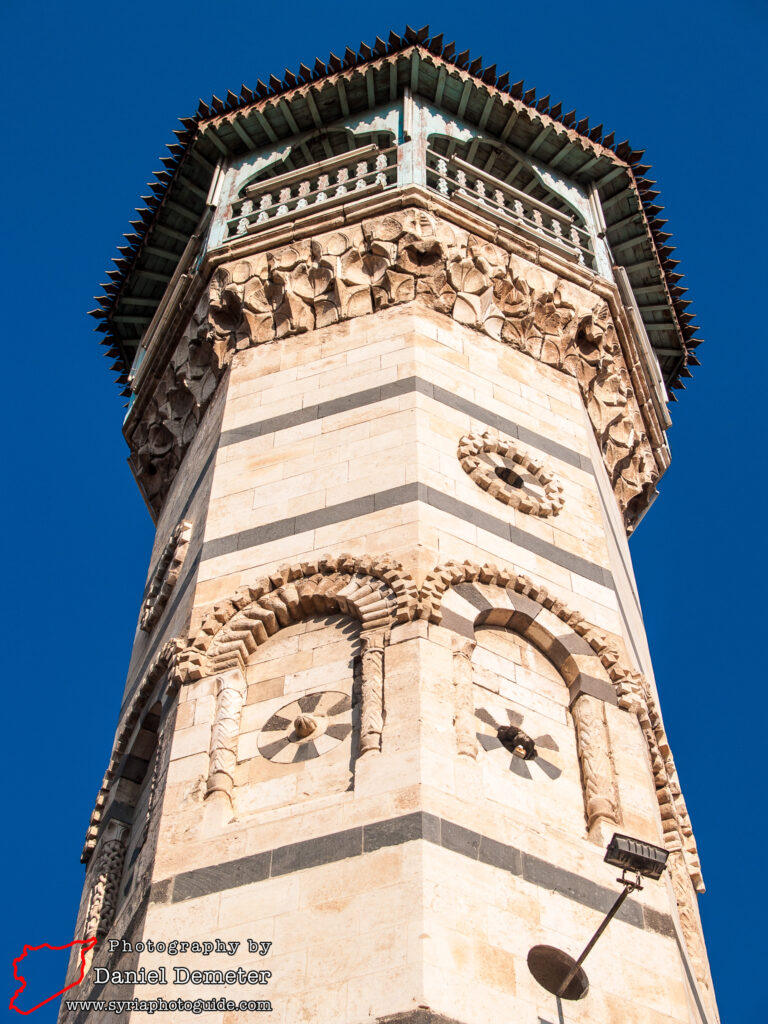
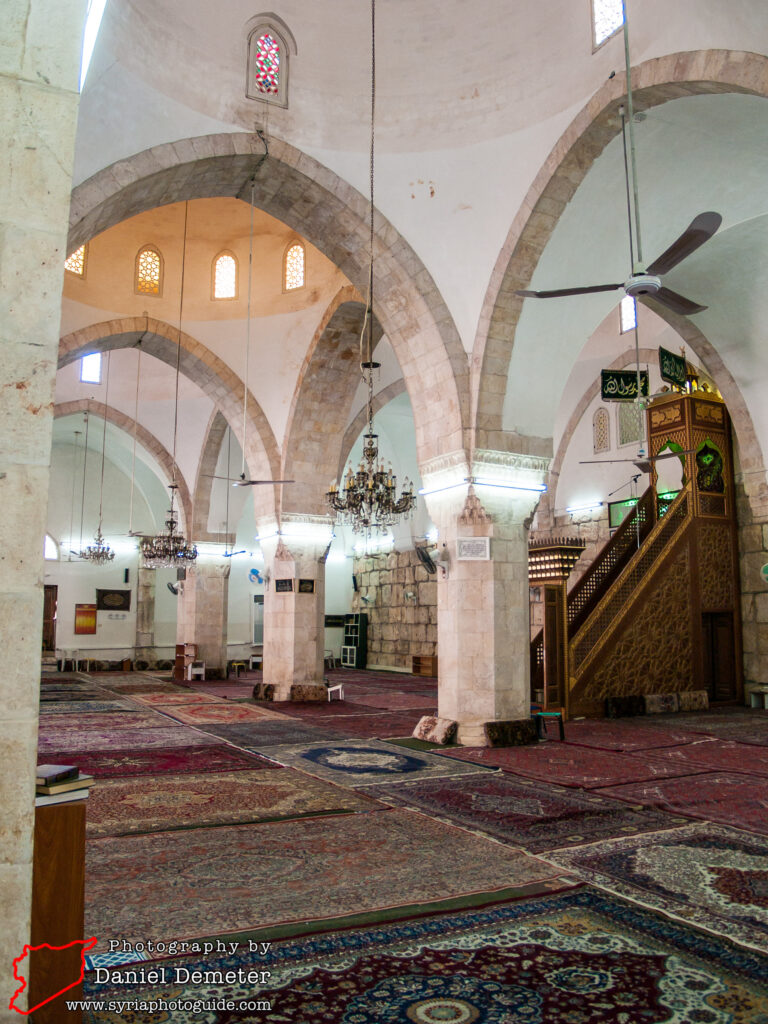
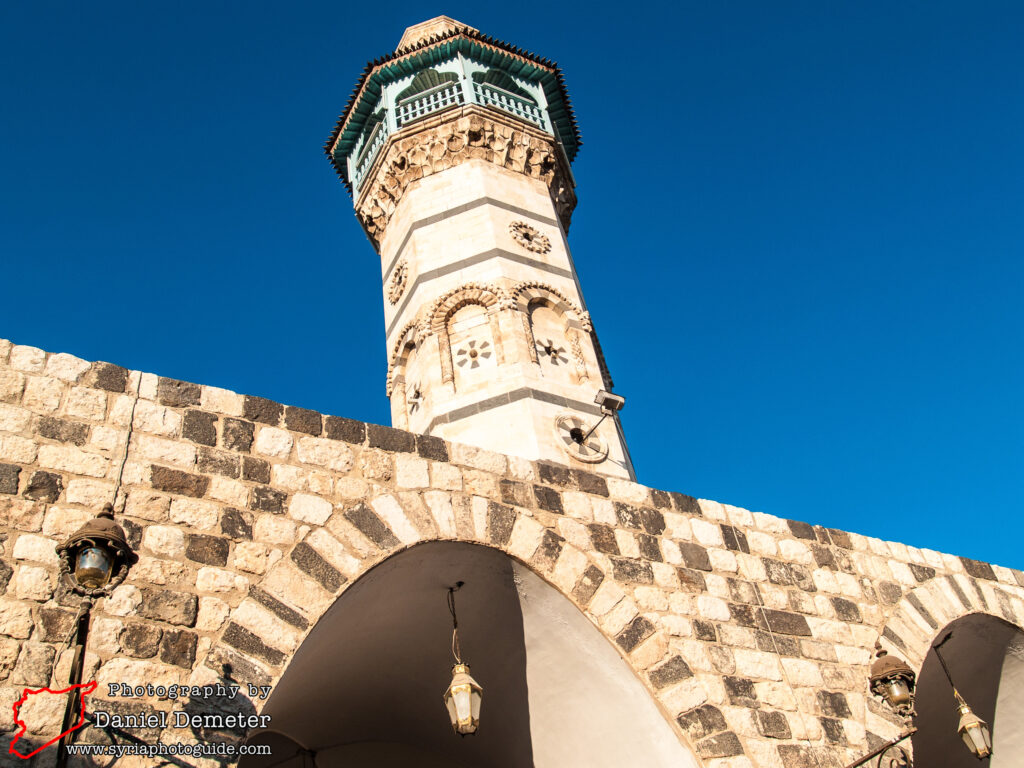
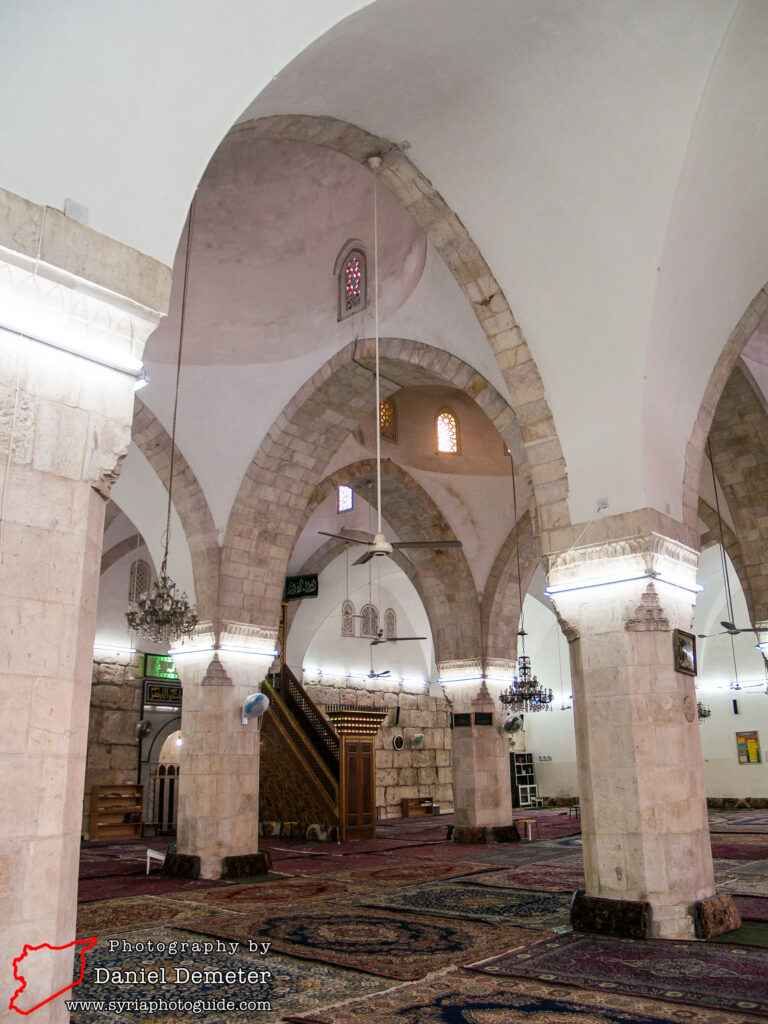
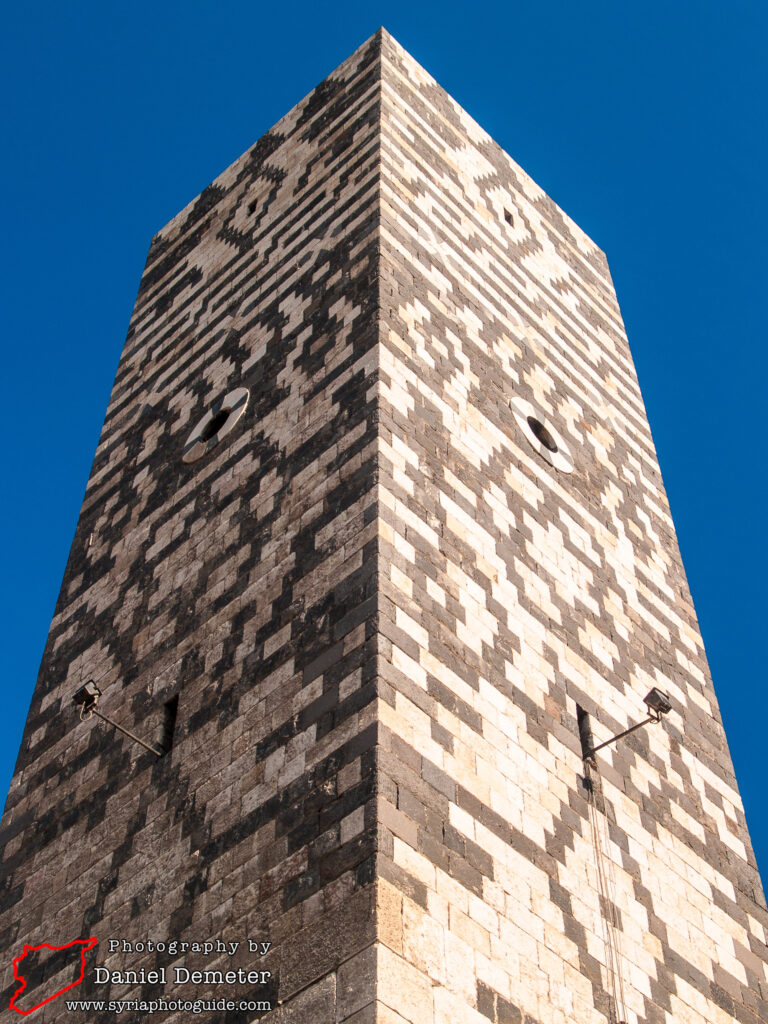
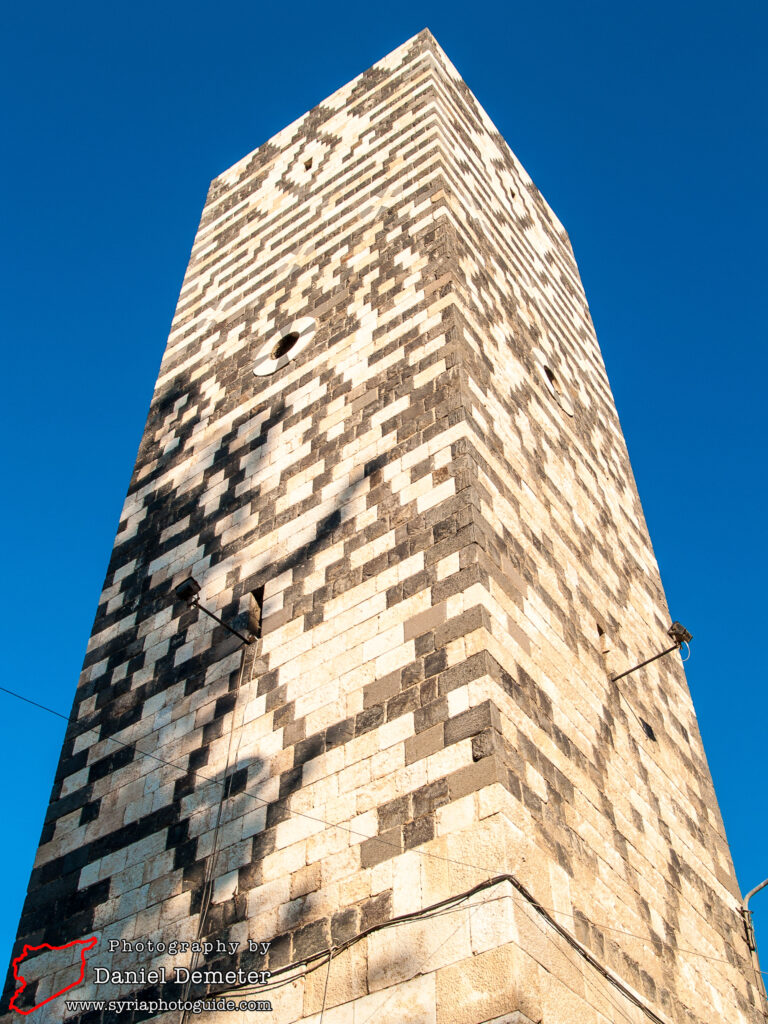
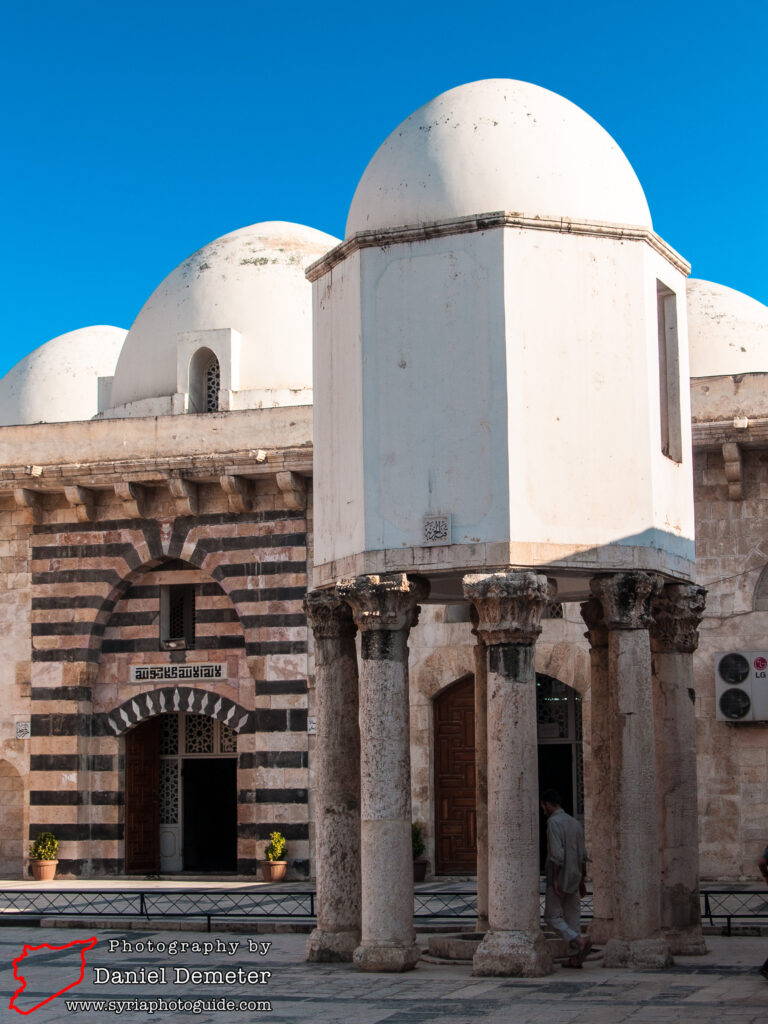
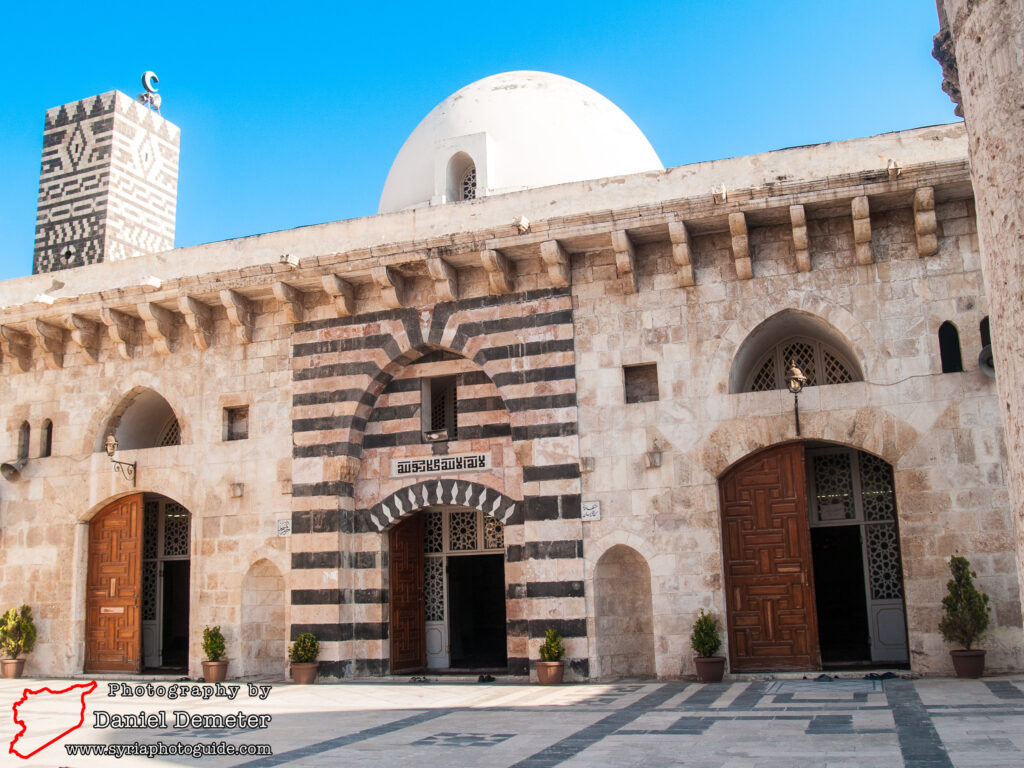
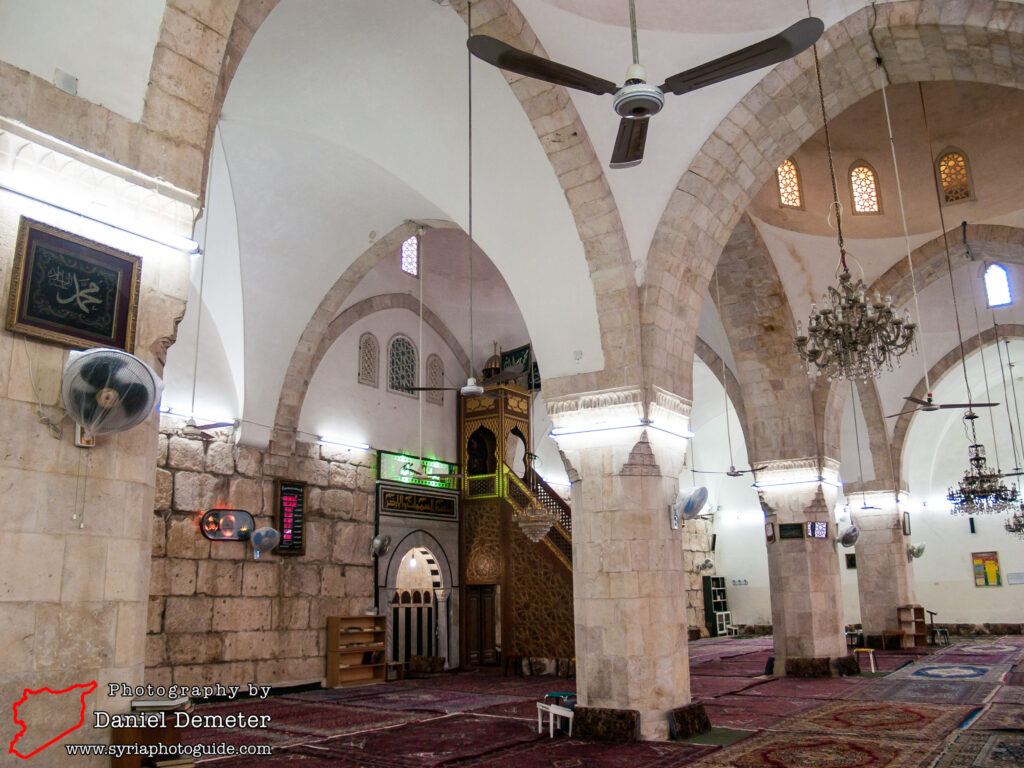
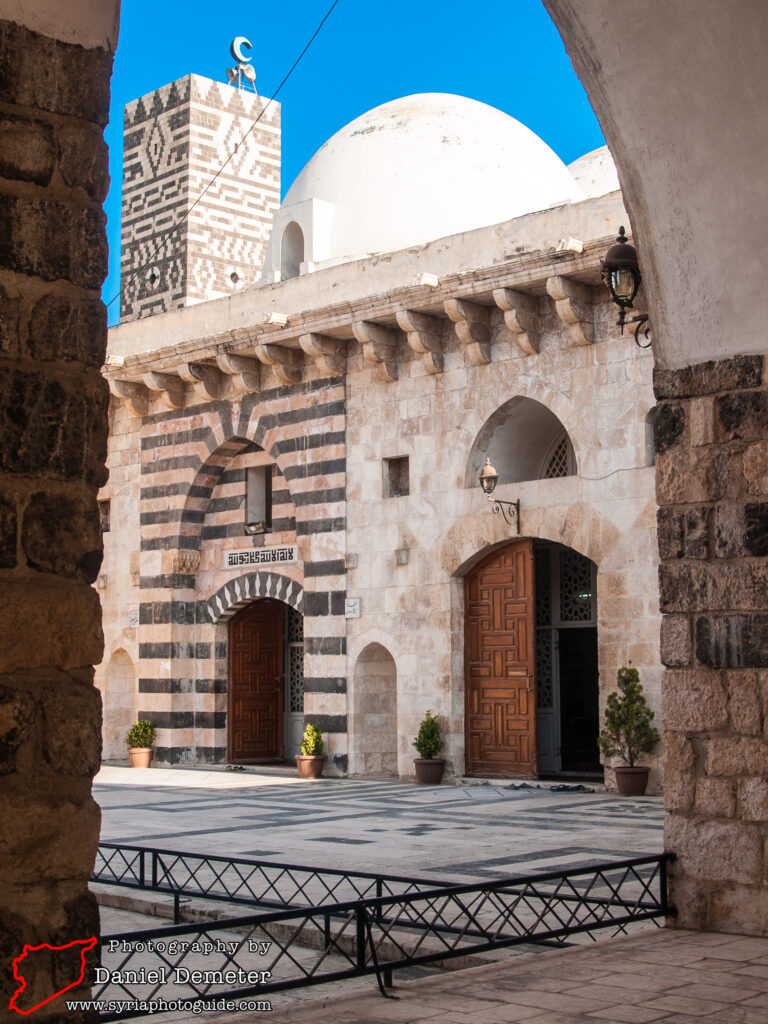
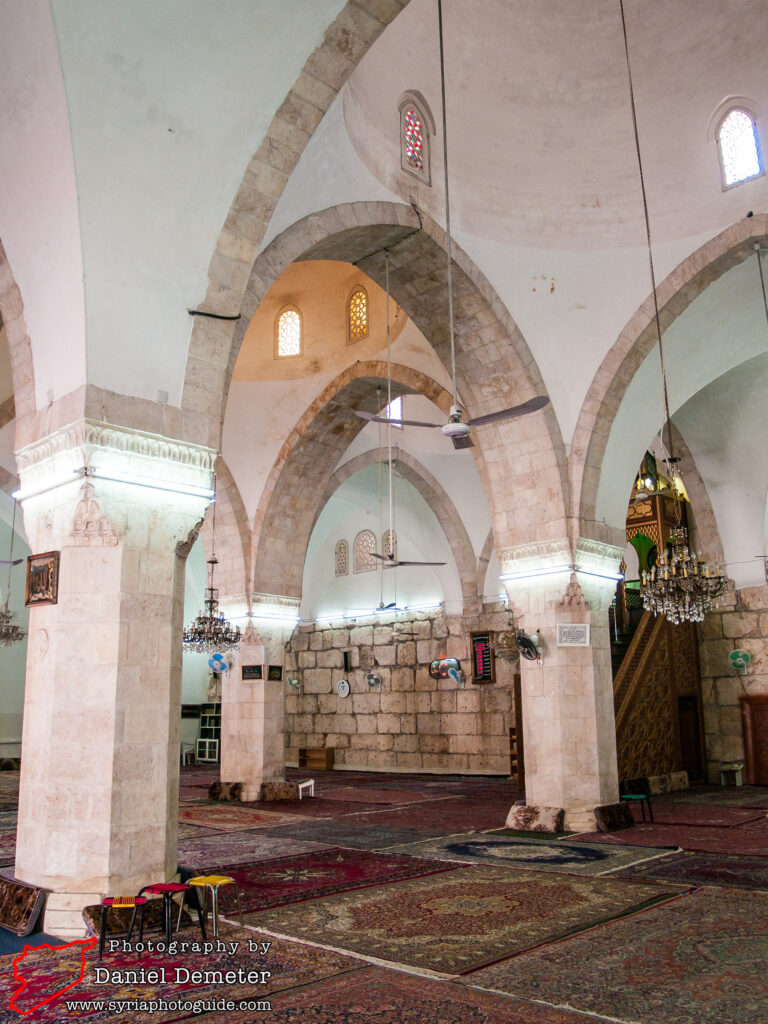
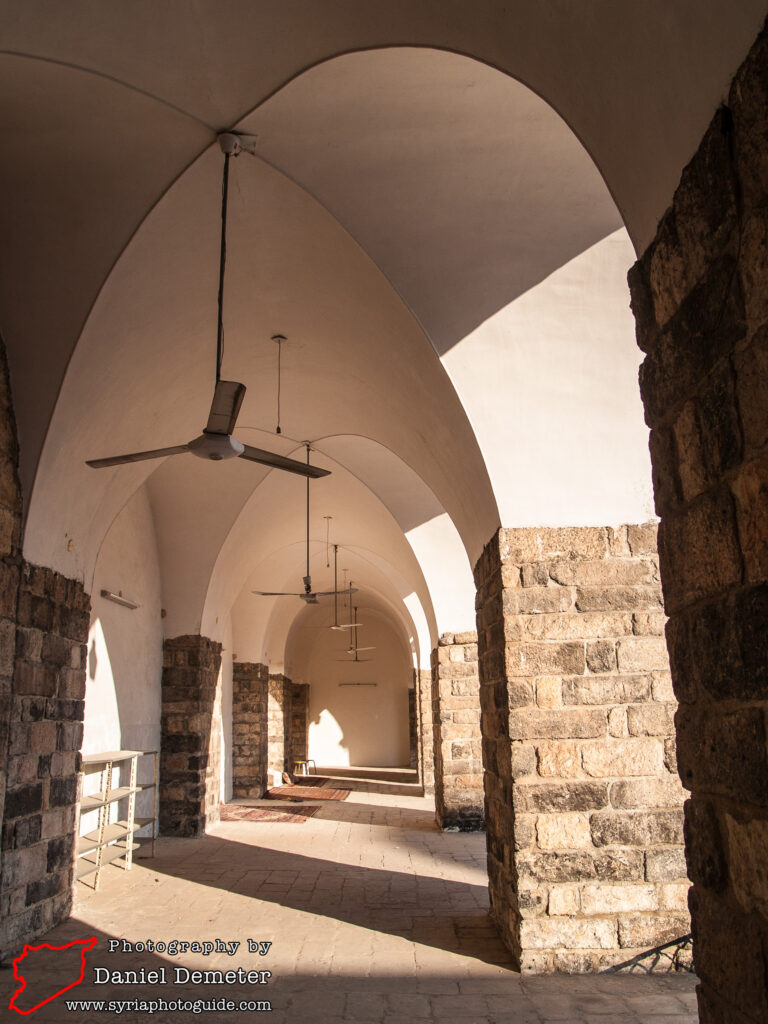
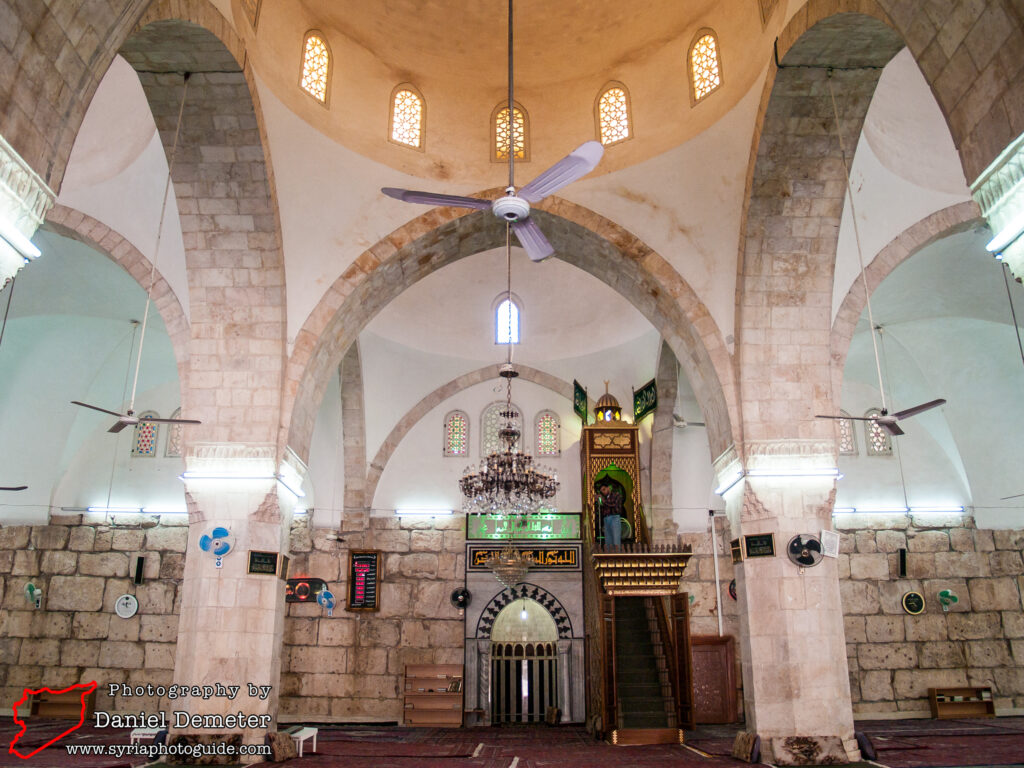
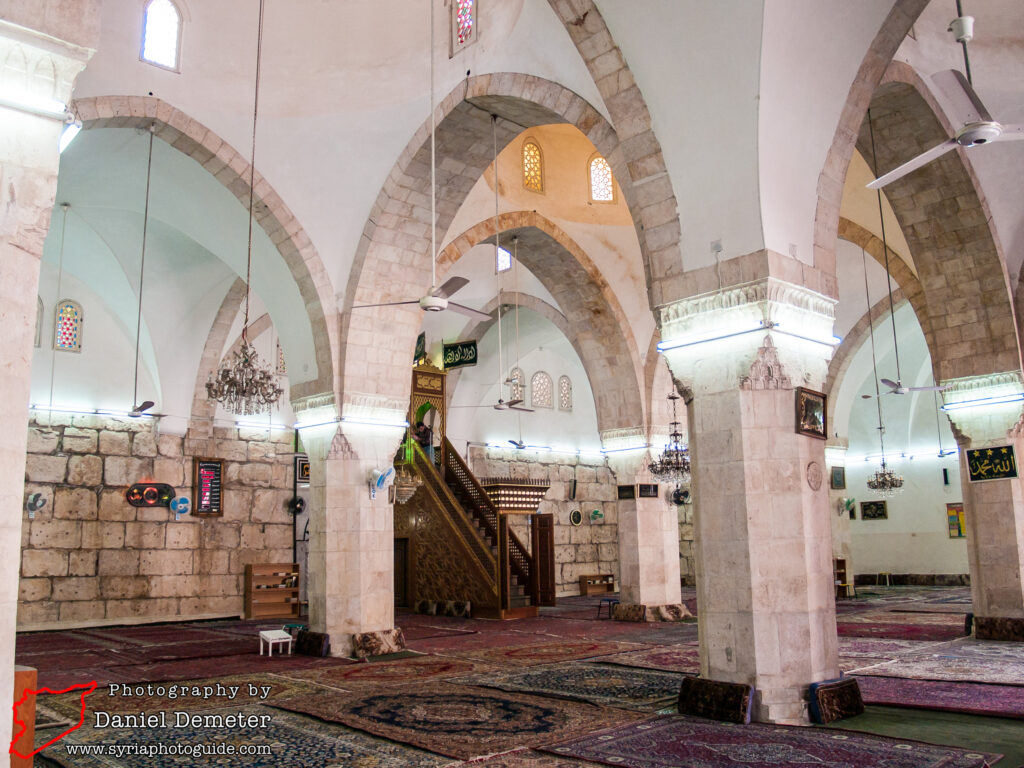
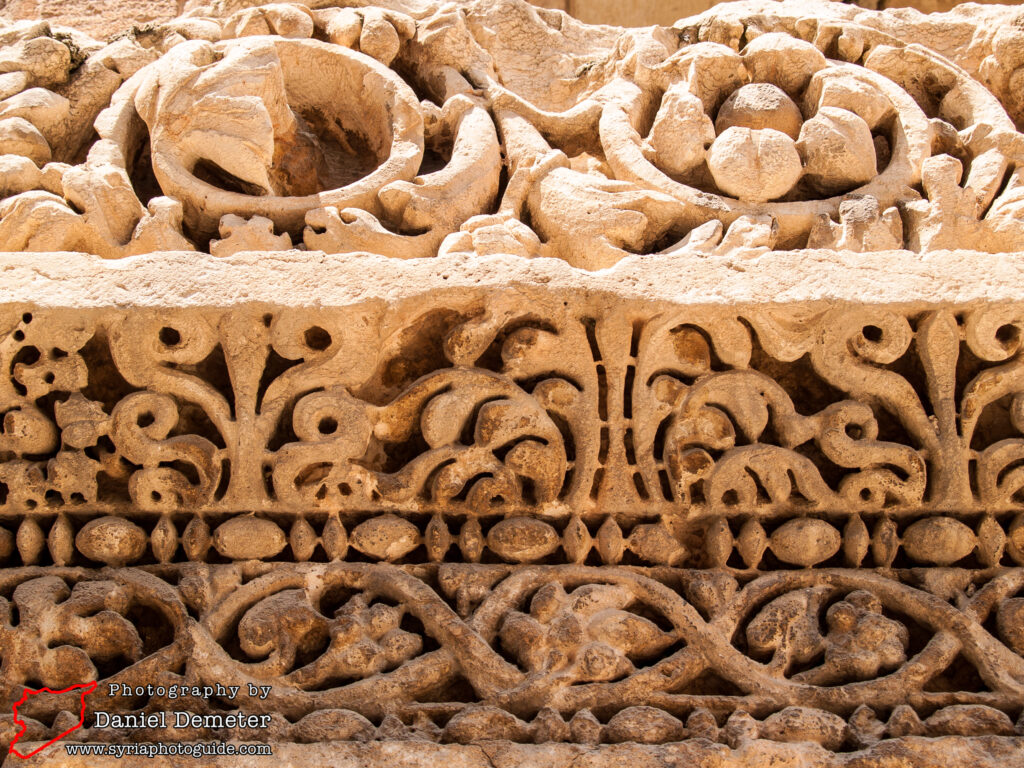
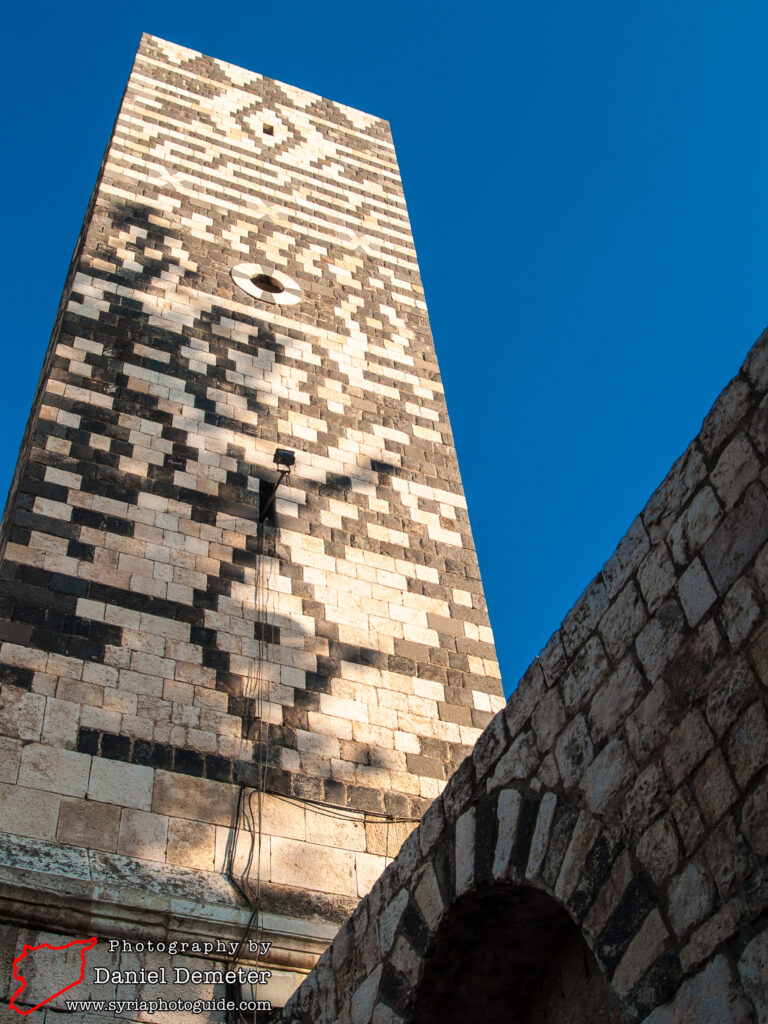
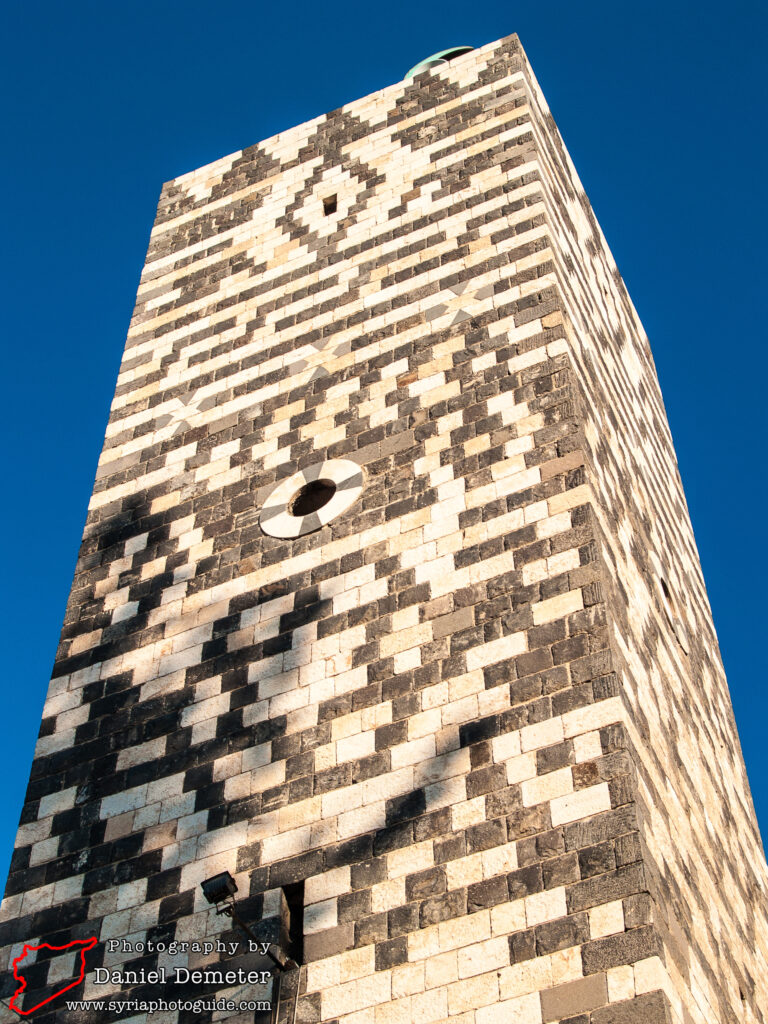
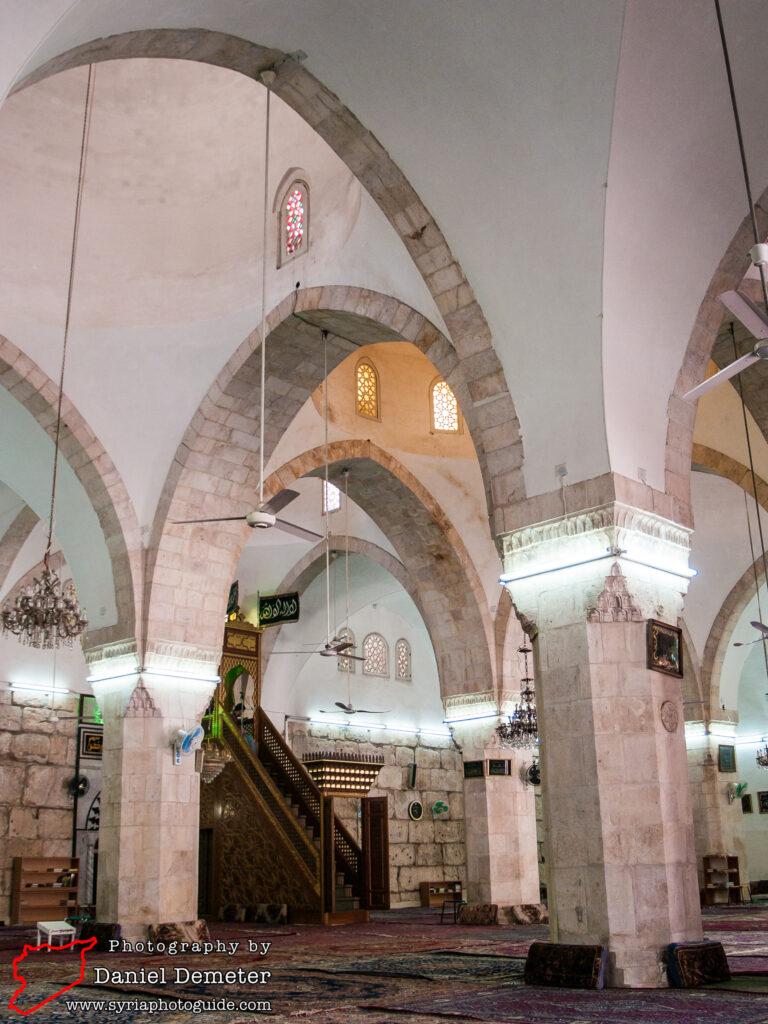
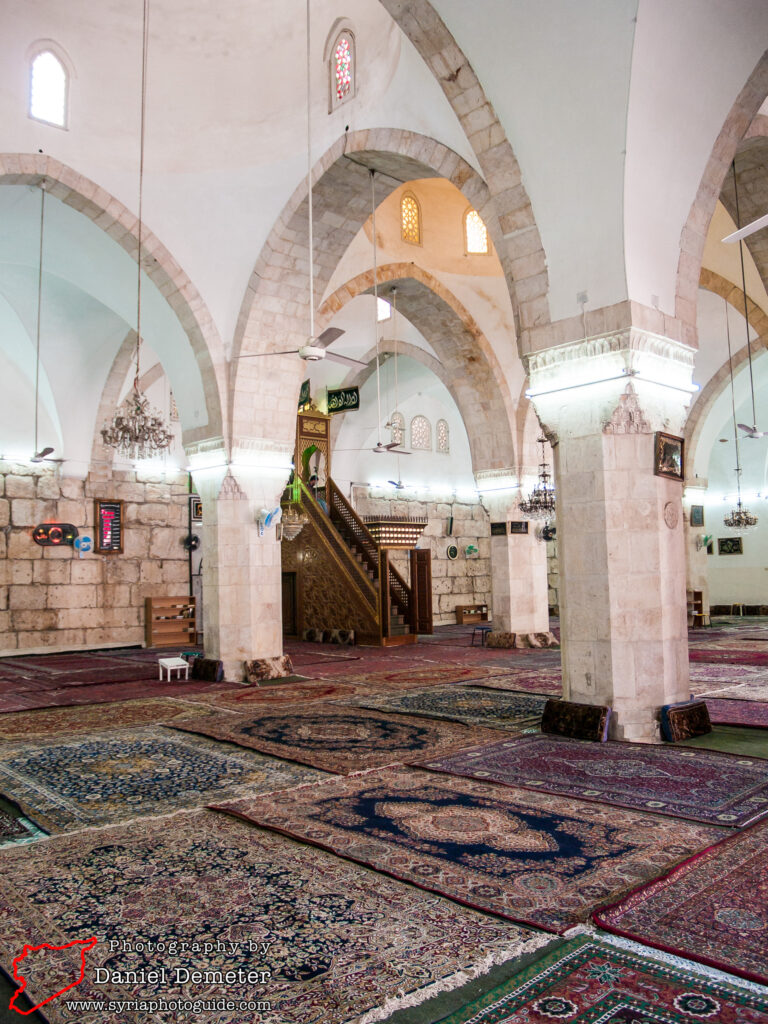
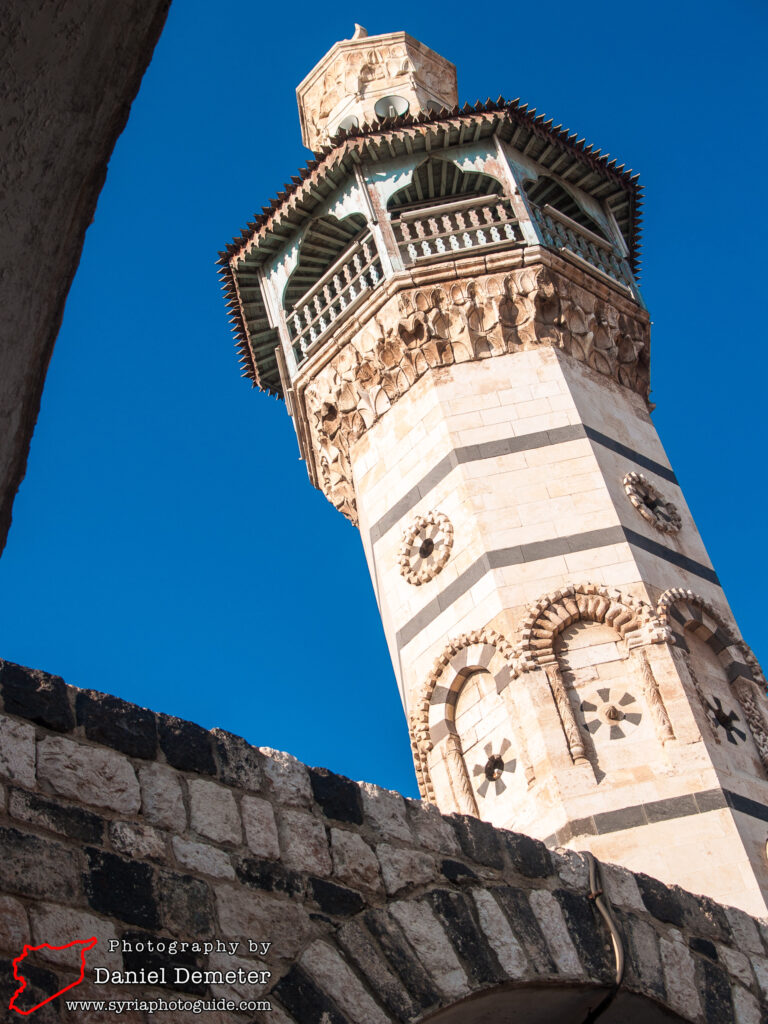
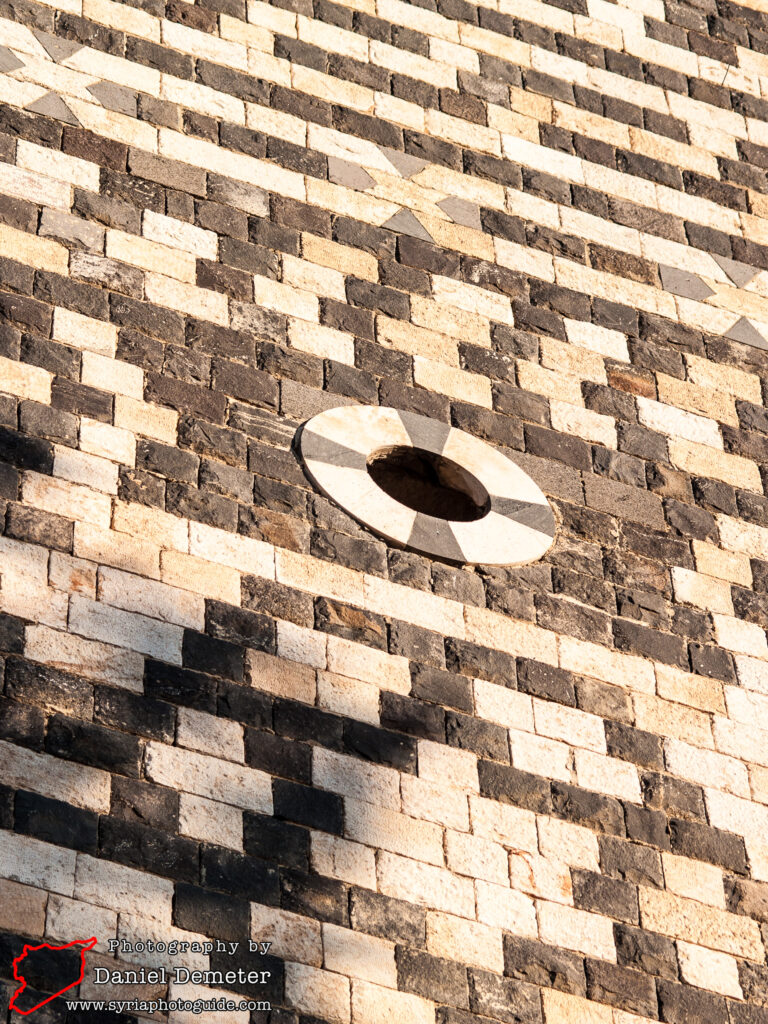
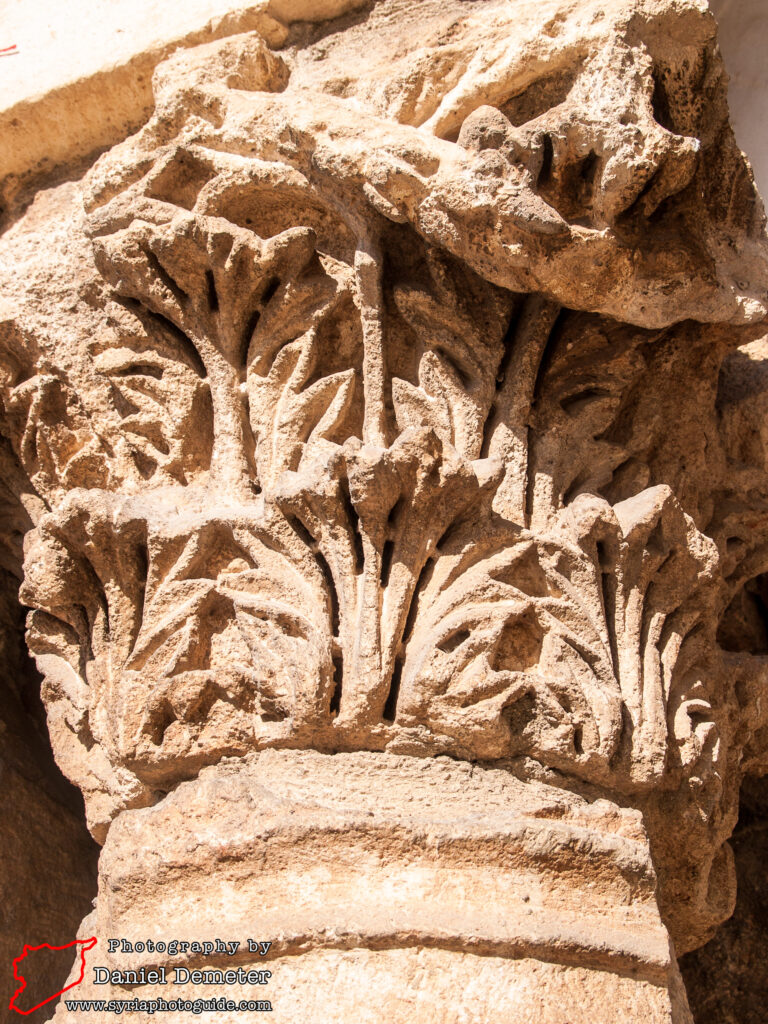
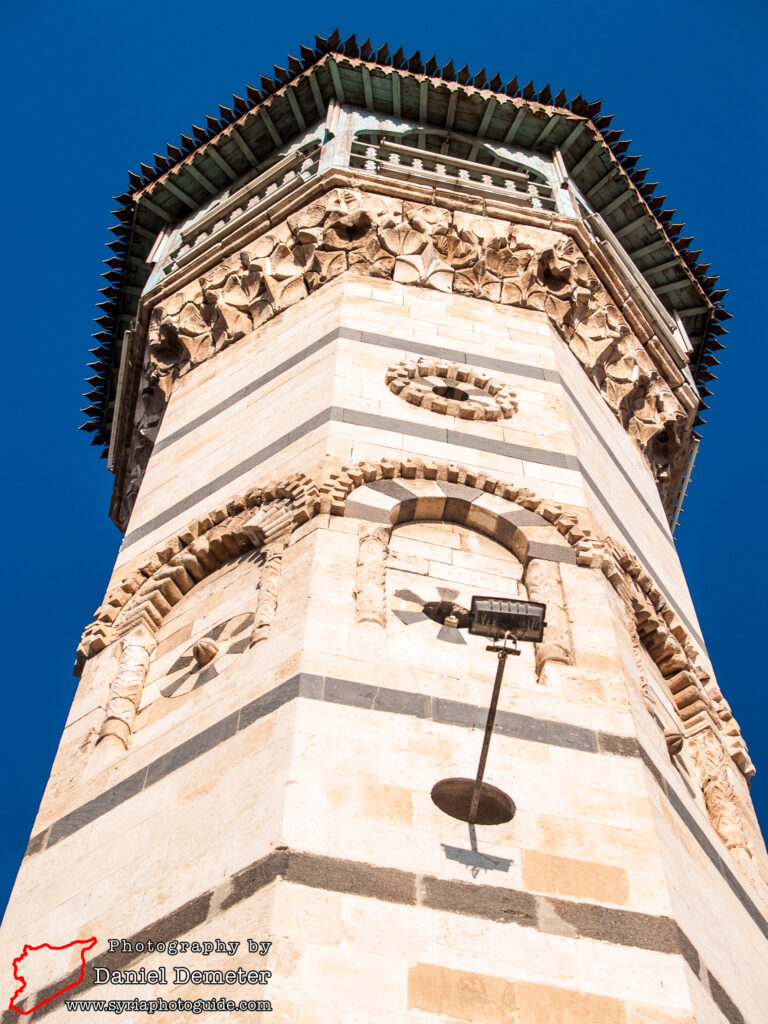
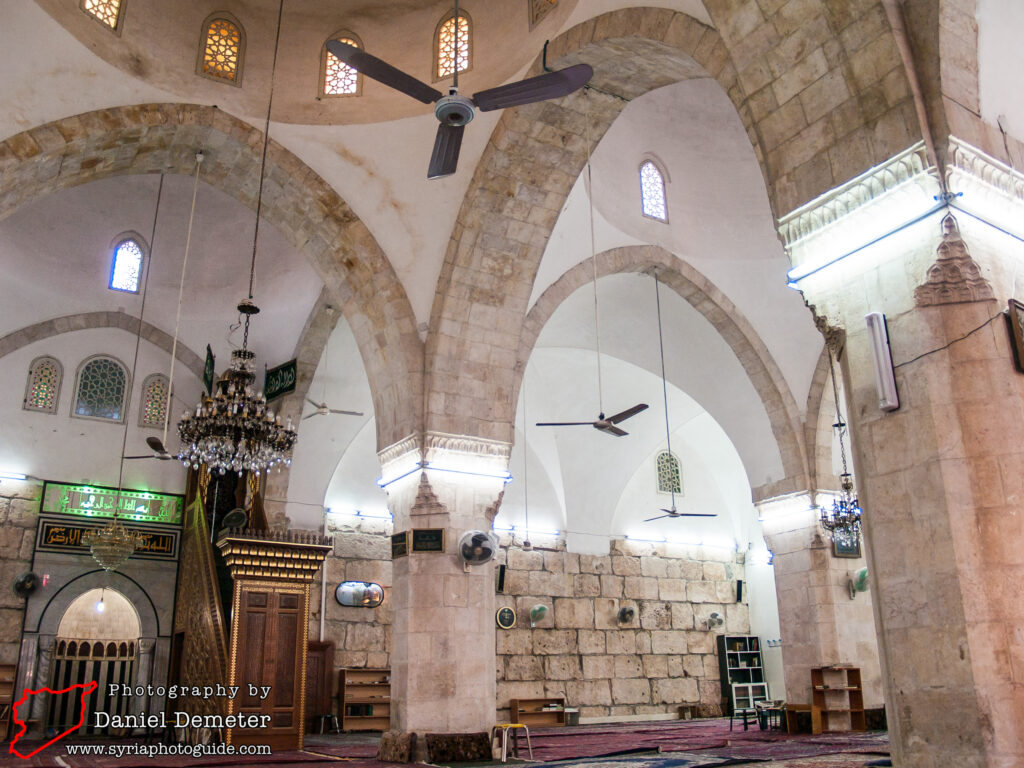
Getting There: The Great Mosque of Hama (جامع حماة الكبير) is located approximately three hundred meters west of al-Hasanein Mosque (جامع الحسنين), on the southwestern side of the citadel mound, and roughly seven hundred meters west of al-Nuri Mosque (جامع النوري).
Coordinates: 35°08’04.00″N / 36°44’43.00″E
Transliteration Variants: al-Kabir Mosque
Rating: 6.5 / 10
References: eSyria, Monuments of Syria (Ross Burns)
